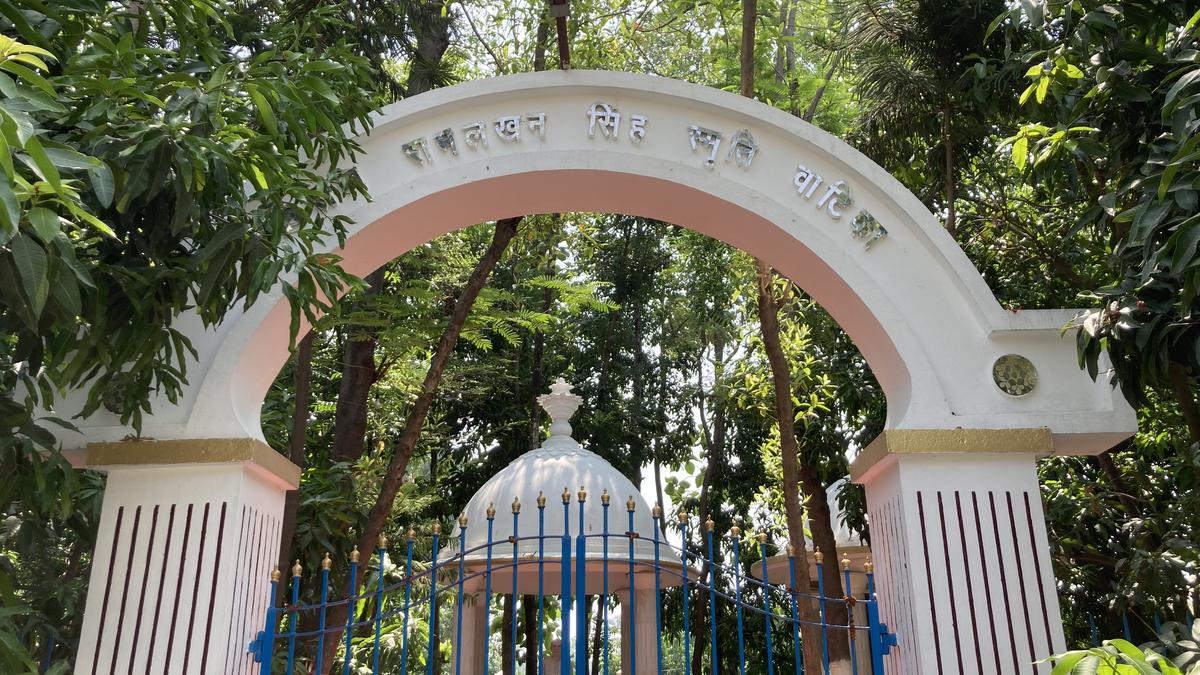
In Nalanda, the CPI(ML)‘s candidate is more popular than the JD(U) candidate, but Nitish Kumar holds the fort
The Hindu
Nalanda, Bihar, home district of Chief Minister Nitish Kumar, faces a tough electoral battle in the upcoming Lok Sabha election.
Nalanda, also known as ‘Kurmistan’, given the dominance of the Kurmi caste in the constituency, is Bihar Chief Minister Nitish Kumar’s home district. Mr. Kumar is a Kurmi, an Other Backward Classes (OBC) community. Nalanda, the historic land where the 24th Jain Tirthankara, Mahavira, is believed to have attained nirvana, is also famous for both its ancient and modern universities. Known too for its large-scale vegetable agriculture, Mr. Kumar has brought several development projects to Nalanda, making it Bihar’s ‘second capital’ after Patna.
For the last 28 years, the Nalanda Lok Sabha constituency has been a stronghold of the Janata Dal-United (JD-U) but this time, much is at stake for Mr. Kumar as his party’s candidate, three-time (2009, 2014 and 2019) sitting MP Kaushalendra Kumar, appears to be struggling in the face of the popularity of his rival, the Communist Party of India-Marxist-Leninist (CPI-ML) candidate, Sandeep Saurav. Nalanda is one of the very few Lok Sabha constituencies in Bihar where Mr. Kumar is seen as a more popular puller of votes than Prime Minister Narendra Modi for candidates of the National Democratic Alliance (NDA) in the electoral battle. Mr. Kumar held roadshows for two days (May 27 and May 28) in the constituency to woo voters in his party’s favour.
“For us, Nitish Kumar is everything. He has given so much to us that we had not seen for decades,” senior citizen Awadhesh Singh of Kalyanbigha village told The Hindu. “Who will give us so much in terms of development?” he asked, sitting in the office-like front room of his village house.
Kalyanbigha is Mr. Kumar’s ancestral village and it boasts of a referral hospital, a pucca road, a branch of the State Bank of India, primary and higher secondary schools, street lights, round-the-clock electricity, a police station, a sports shooting range, and smooth, serpentine, connecting roads in the shadow of rows of trees on both flanks.
The CM’s signature on the village is also evident in a children’s park by the side of a well-fortified pond, an expansive village temple, a mobile tower with vapour lights fixed in the middle, cemented benches under the shadow of a tree by the side of the pond, a memorial park named after his late wife with busts of Mr. Kumar’s parents, near which stands his newly constructed double-storeyed house. But the familiar face of sexagenarian Sitaram Brahi, caretaker of Mr. Kumar’s old ancestral home for over four decades, was missing at the locked new house.
Every year, Mr. Kumar visits Kalyanbigha thrice (on January 1, May 14, and November 29) to offer floral tributes to his parents, the late Ram Lakhan Singh and Parmeshwari Devi, and wife, the late Manju Sinha, on their death respective anniversaries. Mr. Kumar was elected as an MLA for the first time in 1985 from this Assembly constituency.
“Wohi (Nitish Kumar) jab anaj-paani de rahe hain, vikas kar rahe hain, to humlog vote kisko denge, unhi ko na? (when he is providing us food and so much development, who will we vote for? We will vote for him only, no?)” a group of young voterssitting outside the sweltering memorial park on Wednesday afternoon, said.

“Writing, in general, is a very solitary process,” says Yauvanika Chopra, Associate Director at The New India Foundation (NIF), which, earlier this year, announced the 12th edition of its NIF Book Fellowships for research and scholarship about Indian history after Independence. While authors, in general, are built for it, it can still get very lonely, says Chopra, pointing out that the fellowship’s community support is as valuable as the monetary benefits it offers. “There is a solid community of NIF fellows, trustees, language experts, jury members, all of whom are incredibly competent,” she says. “They really help make authors feel supported from manuscript to publication, so you never feel like you’re struggling through isolation.”

Several principals of government and private schools in Delhi on Tuesday said the Directorate of Education (DoE) circular from a day earlier, directing schools to conduct classes in ‘hybrid’ mode, had caused confusion regarding day-to-day operations as they did not know how many students would return to school from Wednesday and how would teachers instruct in two modes — online and in person — at once. The DoE circular on Monday had also stated that the option to “exercise online mode of education, wherever available, shall vest with the students and their guardians”. Several schoolteachers also expressed confusion regarding the DoE order. A government schoolteacher said he was unsure of how to cope with the resumption of physical classes, given that the order directing government offices to ensure that 50% of the employees work from home is still in place. On Monday, the Commission for Air Quality Management in the National Capital Region and Adjoining Areas (CAQM) had, on the orders of the Supreme Court, directed schools in Delhi-NCR to shift classes to the hybrid mode, following which the DoE had issued the circular. The court had urged the Centre’s pollution watchdog to consider restarting physical classes due to many students missing out on the mid-day meals and lacking the necessary means to attend classes online. The CAQM had, on November 20, asked schools in Delhi-NCR to shift to the online mode of teaching.









